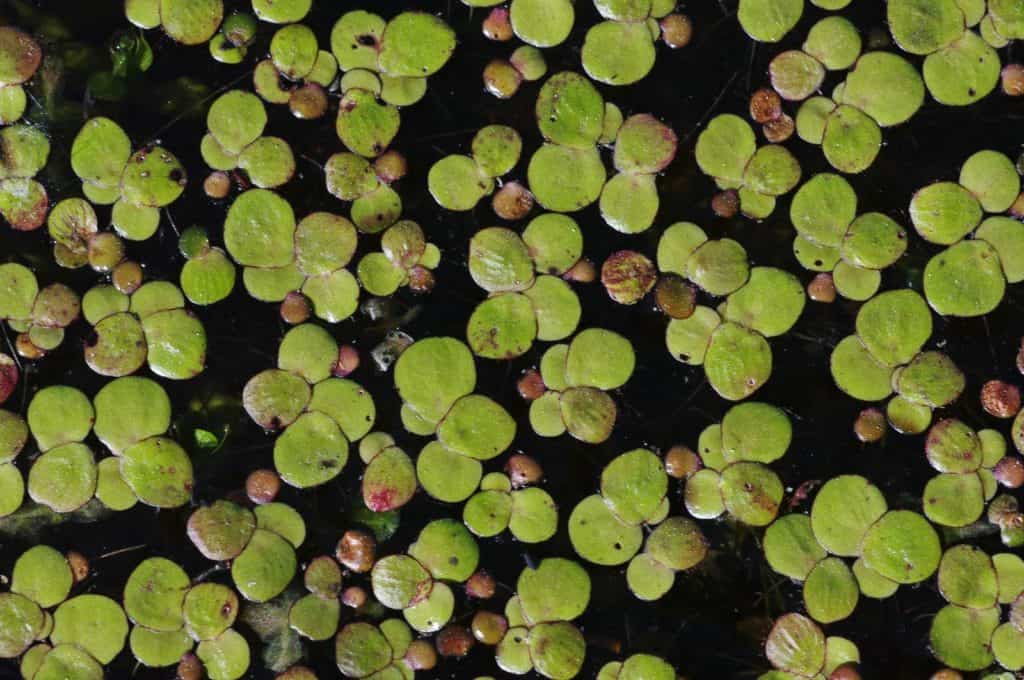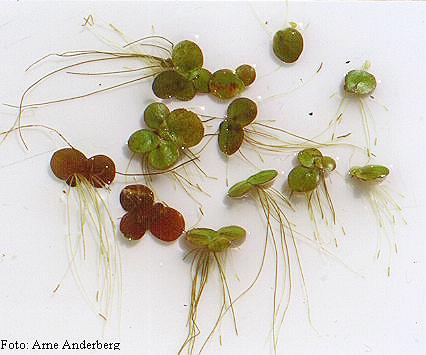Greater Duckweed
weed identification
Spirodela polyrhiza is a free floating freshwater aquatic plant, often growing in dense colonies that form a mat on the water’s surface. Each plant is a smooth, round, flat disc 0.5 to 1.0 cm wide. Its upper surface is mostly green, sometimes red, while the lower surface is dark red. The root system of each plant consists of 3-15 rootlets that originate from a node on the underside of its thallus*. These slender rootlets are up to 15 mm long.
Stationary and slow-moving water bodies, especially where nutrients are high. E.g. ornamental ponds, fish ponds, dams, irrigation dams. Rarely found in Australia
It reproduces mainly vegetatively by division. A mother plant and its vegetative offspring may form temporary clusters of 2-5 thalli, but they eventually separate into individual plants. Rarely does the plant reproduce sexually. On rare occasions, tiny flowers are produced from 2 lateral pouches on the thallus, one male and one female. When the weather becomes cooler, a turion* is produced and sinks to the bottom of the water body, where it lies dormant throughout winter. During warmer weather, it rises to the surface of the water to begin the growth process again. *Turion (a type of bud that is capable of growing into a complete plant).
Attaching to animals such as waterfowl, human activity or floods.
Important food source for aquatic fauna.
What does Greater Duckweed look like?
Disadvantages of Greater Duckweed
Full coverage of a pond or dam by Duckweed can cause significant problems such as:
- Stopping oxygen diffusion
- Shades out all submerged vegetation preventing further growth and causing death
- Causes fish and other aquatic life death
- Provides breeding ground for mosquitos
- Changes the water chemistry to favour harmful algae and bacteria
- If left untreated, Duckweed can render the water unusable and make treatment far more costly than if initially dealt with
treatment
Orange Oil – Designed to treat free floating organic matter. This treatment is best applied when 20% of the surface water is still visible, and is intended to be used over multiple treatments (day 1, 2 and 4).
AQ200 Aquatic Herbicide + Wetting Agent – Chemical Herbicide designed to kill free floating weeds quickly. Use on mild to severe infestations.
Aquatic Weed Skimmers – Physically remove free floating weeds. Use on mild infestations or to aid herbicide treatments.
Aquatic Harvesting – Large amphibious machine that clears the surface of floating aquatic weeds. Book this service for severe infestations or for larger water bodies.
prevention options
Surface Clear – Creates a protection barrier on the surface of the water to limit plant replication and new infestations forming. Use on its own or after herbicide treatments.
Aerating Fountains – Reduces the severity and likelihood of aquatic weed infestations. Use in any body of water.





